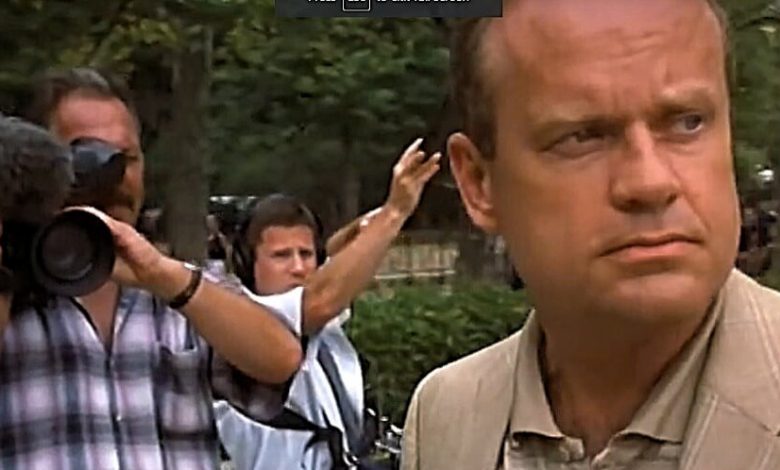
‘“In the future, everyone will be world-famous for 15 minutes.” — Andy Warhol
That famous Andy Warhol quote is the basis for the criminally underrated “15 Minutes.” The 2001 film starring Robert De Niro and Edward Burns has sadly only grown more relevant as the years have dragged on.
It doesn’t take a genius to see how Warhol’s quote applies to today’s world, one where literally anyone with an Internet connection can get noticed by the world for a brief flash before the collective consciousness turns its attention to something new.
However, what’s not in Warhol’s quote — but can certainly be inferred by reading between the lines — is that in a world where anyone can be famous for 15 minutes, we have been gobbled up into a universe where the pursuit of fame is constant and relentless.
Whether it’s politicians like Rep. Alexandria Ocasio-Cortez taking clearly posed photographs at a migrant detention center or your friend who can’t stop digitally mapping their every meal and location, the race to get attention never stops.
- Perception is reality.
- Clickbait headlines are truth.
- Mob reactions on social media are even somehow respected.
Today’s world is alarmingly similar to the heightened reality presented in “15 Minutes,” a movie that has no doubt been forgotten by most, but really should be studied anew.
Written and directed by John Herzfeld, “15 Minutes” packs a straightforward cop movie premise peppered with surprising layers of satire.
De Niro stars as Detective Eddie Flemming, a New York City homicide cop who has managed to juggle his job with fame rather well. Flemming is a local celebrity. He’s been the subject of multiple television movies and he even has a working relationship with the media, represented by a cutthroat Kelsey Grammer.
The “Frasier” alum is looking for the bloodiest, edgiest stories because that’s what the people demand.
While Flemming’s unusual embrace of news cameras seems at first to come from a desire for fame and attention, we discover it’s actually part of a careful balancing act that Flemming knows makes him a better cop. Being a recognizable face helps people talk to him and open up more because we sure do love our celebrities in America.
Two European immigrants (one from the Czech Republic and the other from Russia) are Flemming’s latest targets. The men murdered an old business partner and his wife and are now pursuing a woman who witnessed the crime.
Trying to cover up their misdeeds with a fire, Flemming is joined on the case by Fire Marshal Jordy Warsaw (Edward Burns), a young man Flemming seems inclined to take under his wing.
What makes the case — and the movie — different from other cop-chases-bad-guys pictures is that the antagonists are filming their crimes in pursuit of fame and fortune.
RELATED: Have You Seen This Amazing Car Stunts?
While Emil (Karel Roden) is first annoyed at his wannabe filmmaker partner’s (Oleg Taktarov) need to film their crimes, he is later inspired by daytime reality television and a case in the news about a murderer getting off due to mental insanity — he tells Oleg to film everything.
The plan? They will film their crimes because who would do such a thing but insane men? They will kill Flemming, turn themselves in, end up in a mental asylum, later say they are not crazy, and then profit from their crimes.
FAST FACT: John Gotti’s lawyer Bruce Cutler appears as a version of himself in “15 Minutes.” Though originally playing a lawyer by a different name, Cutler insisted he simply use his own name, which surprised director Herzfeld since the character Cutler plays is a corrupt lawyer who defends a murderer.
Their plan doesn’t quite hold up against legal reality, but it’s part of the movie’s heightened truth. Oleg’s film-within-a-film turns into a brilliant piece of satire that runs parallel with the movie and sometimes flat out interrupts it. Grammer’s nightly news program is also a little extreme, but it’s all part of making grander points that were perhaps largely lost on audiences in 2001.
Oleg’s plan is really to paint himself as a victim and who today in America isn’t a victim? We live in a culture where almost any action is forgivable as long as you can convince the mob that you are some sort of oppressed minority — just look at the crimes by illegal immigrants that are swept under the rug by the mainstream media and hungry politicians.
Jordy stands counter to this. He doesn’t understand the media or the fact that people can be so easily manipulated to accept atrocities as normal. He’s told time and time again by his superiors that perception is more important than right versus wrong.
This is absolutely true today. Look at Roseanne Barr. Look at James Gunn. Look at a million examples of people judged based on a perception, rather than an undeniable fact. Context is dead and irrelevant in a world where the only thing that matters is what is in front of a camera or written online.
In true Western fashion, Jordy stands alone at the end of the film, betrayed by a society addicted to story over fact and victimhood over responsibility. Even when he rides off into the sunset, Herzfeld makes clear that things have not changed. The individual still pales in comparison to the narrative pushed by the media and the powers that be to the masses.
If released today, “15 Minutes” would receive a VOD release and maybe some pats on the back from media critics. In 2001, it was given a wide release and marketed as another Robert De Niro action vehicle. This is likely why the movie failed to find much of an audience on its first go-round.
If there’s a movie that deserves a fresh watch today, it’s “15 Minutes.” Its satire, characters, depiction of the media, points about victimhood — all of it works so much better in the context of what we see now happening day in and day out in our culture.
This movie was way ahead of its time.
RELATED: Did De Niro’s Trump Derangement Syndrome Hurt His Broadway Show?
Beyond that, it’s also a solid effort from Herzfeld. Filmed in New York City, the movie has a practical appeal that many CGI-filled, empty-headed blockbusters are missing today. When De Niro and Burns are running down a New York street, you know they are actually running down a Big Apple street.
There’s a grittiness in every frame, which is at least partially thanks to Herzfeld insisting on casting real-life cops in supporting roles.
Burns and others give their all too, not only landing the emotional scenes, but also clearly acting out a lot of their own stunts. There’s one scene where Burns reportedly actually burned his own arm and you can see that it’s him and not a stuntman in the scene.
“15 Minutes” challenges us in ways too few movies do today. Check it out wherever you can and you’ll be surprised by how close our current reality is to the heightened one Herzfeld was selling nearly 20 years ago.

